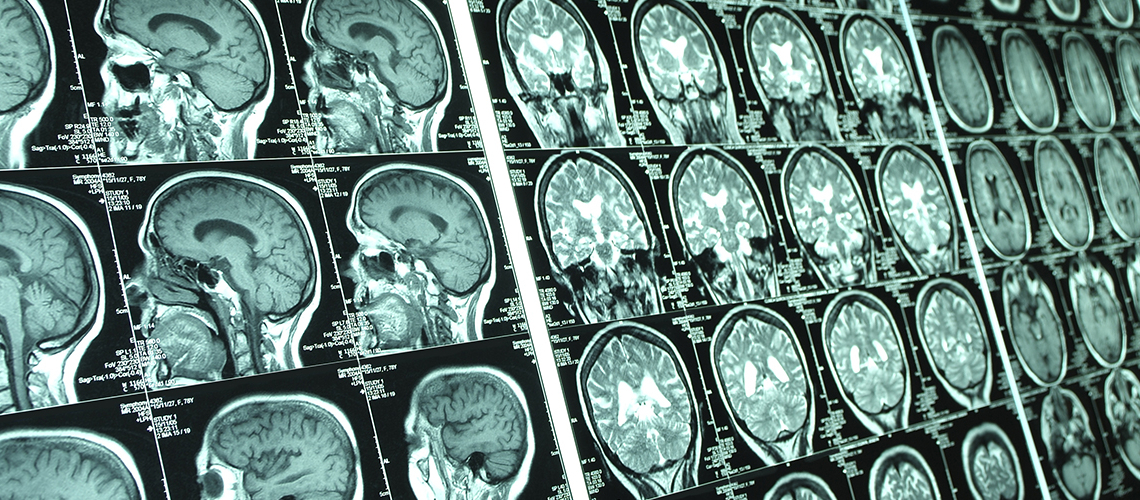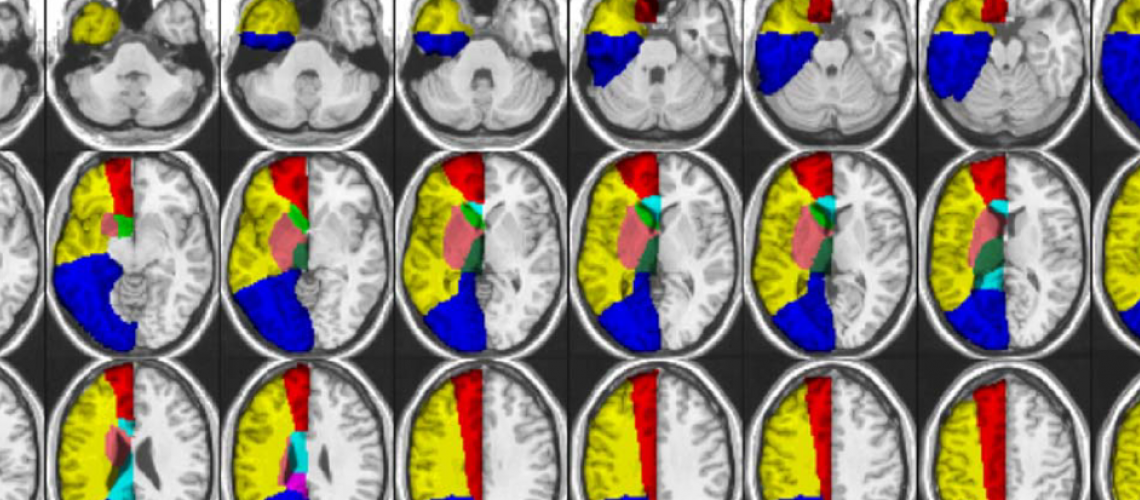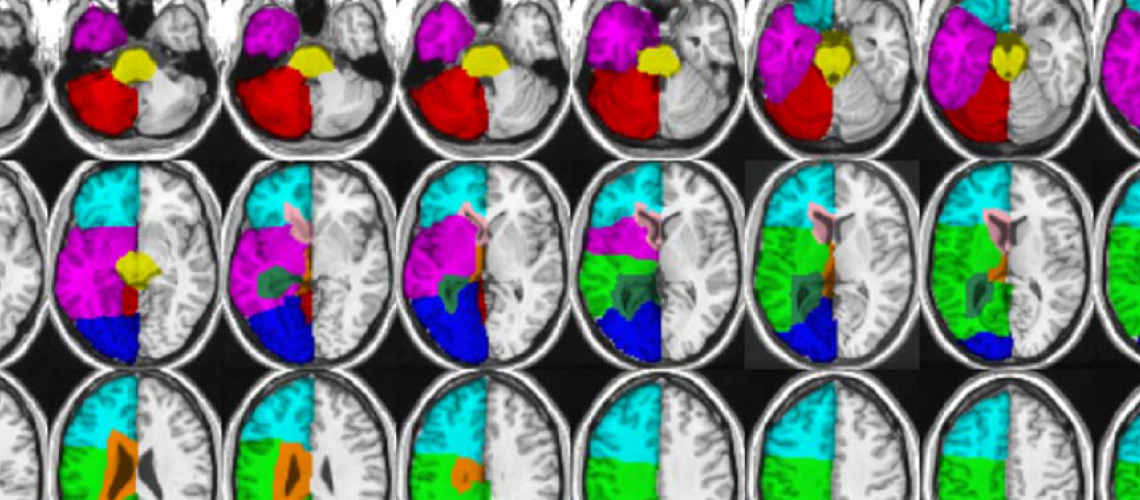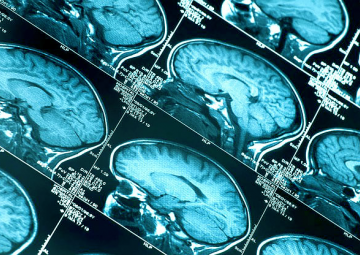We are trying to standardise the method by which white matter lesions on brain MRI scans are quantified on a large scale for research. Join us in an attempt to harmonise this effort around the world.
White matter hyperintensities (WMH) are commonly observed in ageing brains. Although the significance of these brain lesions is still controversial, they have been consistently associated with negative health outcomes including cognitive decline, dementia, neuropsychiatric disorders and motor deficits. The Neuroimaging Group at the Centre for Centre for Healthy Brain Ageing (CHeBA) currently have a number of projects in this research area, including the investigation of genetic determinants of small vessel disease in the brain - which are best identified by the presence of WMH (generously funded by the John Holden Family Foundation).
Following on from this research, Head of CHeBA's Neuroimaging Laboratory Associate Professor Wei Wen and post-doc fellow Dr Jiyang Jiang have developed a pipeline which CHeBA has now made publicly available for download to all researchers and collaborators.
This pipeline will provide users with comprehensive and accurate information on white matter hyperintensities and the hope is that researchers will find this pipeline user-friendly while boosting research productivity.
Download the Pipeline Quick Start Manual
Citation
If you used UBO Detector, please cite:
Jiang, J., Liu, T., Zhu, W., Koncz, R., Liu, H., Lee, T., Sachdev, P.S., Wen, W. UBO Detector – A cluster-based, fully automated pipeline for extracting white matter hyperintensities. NeuroImage, doi.org/10.1016/j.neuroimage.2018.03.050 (2018).
If you used TOPMAL, please cite:
Jiang, J., Paradise, M., Liu, T., Armstrong, N. J., Zhu, W., Kochan, N. A., Brodaty, H., Sachdev, P. S., Wen, W. The association of regional white matter lesions with cognition in a community-based cohort of older individuals, NeuroImage: Clinical 19:14-21, doi.org/10.1016/j.nicl.2018.03.035 (2018).
Background Information about the CHeBA Pipeline
White matter hyperintensities (WMH), sometimes referred to as unidentified bright objects (UBO) - tongue-in-cheek - are abnormally hyperintense (bright) regions in cerebral white matter observed on MRI when particular scans, such as T2-weighted fluid attenuated inversion recovery (FLAIR), are used. They are thought to be the result of reduced blood supply or other kinds of damage to the white matter. Under the microscope, these regions of WMH show signs of loss of myelin sheath that surrounds the nerve fibres in the white matter, along with some other changes and sometimes total loss of nerve fibres. Multiple factors, including vascular and genetic components1, can contribute to the development and progression of UBO.
WMHs being to appear in adults in their middle age2,3, and become more severe in older adults and those with diagnosis of stroke, cerebrovascular disease and neurodegenerative diseases. They are an important marker for brain disease in both research and clinical settings. Most commonly, the severity of WMHs in the brain is done by rating a scan on visual inspection. This is not accurate or precise for research purposes, and is additionally time consuming and requires considerable training and expertise.
Researchers from the Neuroimaging Lab at the Centre for Healthy Brain Ageing (CHeBA) have developed a fully automated pipeline (UBO Detector) to automate the extraction of WMHs. UBO Detector takes T1-weighted and FLAIR scans as input, provides quality control steps in the middle, and generates both image and text file output to quantify WMHs in various brain regions.
In addition to the global WMH volumes, anatomical locations of WMH also provide crucial information on the likely underlying pathological processes. In UBO Detector, we provide regional WMH measures in lobes and arterial territories, in addition to global WMH volumes. UBO Detector also summarise the number and size of WMHs across the brain.
For more information, bug reporting and suggestions please contact cns.cheba@unsw.edu.au.
References:
- Sachdev, P. S. et al. White Matter Hyperintensities Are Under Strong Genetic Influence. Stroke 47, 1422-1428, DOI:10.1161/STROKEAHA.116.012532 (2016).
- Wen, W., Sachdev, P. The topography of white matter hyperintensities on brain MRI in healthy 60- to 64-year-old individuals. Neuroimage. 22(1), 144-54. DOI: 10.1016/j.neuroimage.2003.12.027 (2004).
- Wen, W., Sachdev, P. S., Li, J. J., Chen, X. & Anstey, K. J. White matter hyperintensities in the forties: their prevalence and topography in an epidemiological sample aged 44-48. Hum Brain Mapp 30, 1155-1167, DOI:10.1002/hbm.20586 (2009).
Terms and Conditions
By checking the box on the CHeBA Data File Download Request Form, you acknowledge and agree to the following terms in respect of your download, access and use of the UBO Detector (WMH pipeline), Release 1.0 (the “Pipeline”):
- Ownership: All intellectual property rights (including copyright) in and to the Pipeline are owned by the University of New South Wales (“University”).
- Licence: You may download, access and use the Pipeline for non-commercial research or non-commercial educational purposes. You must not distribute copies of the Pipeline to any other person.
- Pipeline is provided on an ‘as is’ basis and disclaimer: You acknowledge that your download, access and use of the Pipeline is at your own risk and the University makes the Pipeline available on an ‘as is’ and ‘as available’ basis. To the extent permitted by law, the University makes no representations, warranties or conditions of any kind concerning the Pipeline, express, implied, statutory or otherwise. This includes without limitation, any representations, warranties or conditions regarding:
- the content or accuracy;
- merchantability or fitness for a particular purpose;
- non-infringement;
- the absence of latent or other defects; or
- the presence or absence of errors, whether or not discoverable,
- Updates: You acknowledge that the University may make changes to the functionality of, and release updates to, the Pipeline from time to time.
- Liability: To the extent permitted by law, the University excludes all liability to you for any loss, damage, cost or expense you suffer, or incur, in connection with your download, access or use of the Pipeline, and your use of any output directly generated from your use of the Pipeline. You agree to indemnify the University and its personnel for any loss or damage suffered or incurred by them in connection with your use of the Pipeline and your use of any output directly generated from your use of the Pipeline.
- Third party software: You acknowledge that use of the Pipeline is dependent on, and requires that you have various third party software (which are subject to their own individual licences agreements which you are advised to review) installed. The University does not own any of those third party software packages and makes no representations or warranties of any kind concerning, nor does the University in any way endorse, that third party software.
Downloads
Neuroimaging Group Pipeline Quick Start Manual (656kb, PDF)
CHeBA UBO Detector - Pipeline Terms and Conditions (286kb, PDF)
To download the latest, improved version (that works in 'native' space), visit CHeBA NiL Software with UBO Detector to Extract White Matter Hyperintensities on GitHub.














